

 marcopolo@chinatoursnet.com
marcopolo@chinatoursnet.com
Home / Tibet Travel Guide/ Attraction
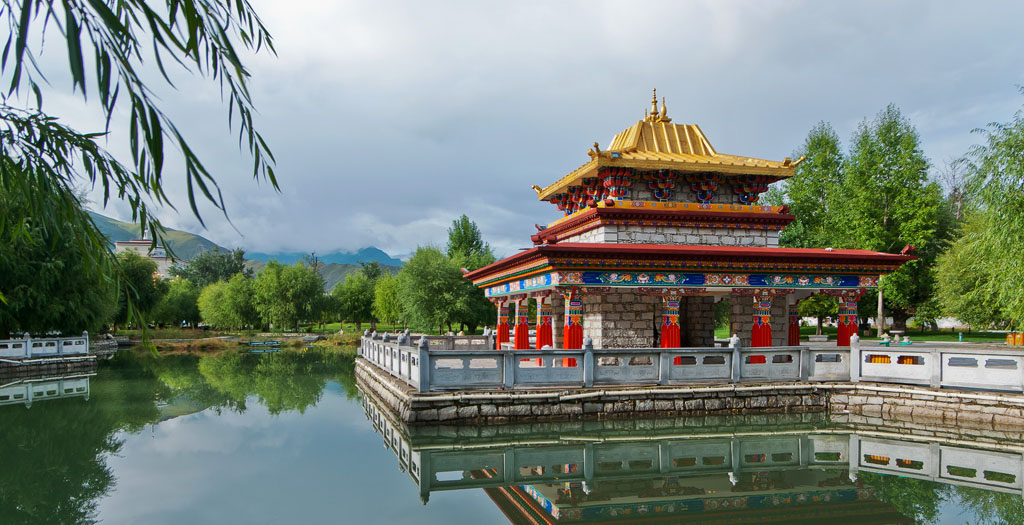
Norbulingka
.png)
.png)
Norbulingka
.png) Tour Code : C1863
Tour Code : C1863
.png) Type : Historic sites
Type : Historic sites
.png) City / Province : Tibet
City / Province : Tibet
.png) Built in : 1755AD
Built in : 1755AD
Highlights
Norbulingka means Jewel Garden. First built in 1751, it borrowed architectural style from the inland areas of China while maintaining local ethnic and religious features. Norbulingka served as a traditional summer palace and residence starting with the 7th Dalai Lama, and now it is the largest garden in Tibet.
Norbulingka
Norbulingka (Wylie: Nor-bu-gling-ka; simplified Chinese: 罗布林卡traditional Chinese:羅布林卡literally "The Jewelled Park") is a palace and surrounding park in Lhasa, Tibet, China, built from 1755. It served as the traditional summer residence of the successive Dalai Lamas from the 1780s up until the 14th Dalai Lama's exile in 1959. Part of the "Historic Ensemble of the Potala Palace", Norbulingka is recognized as a UNESCO World Heritage Site, and was added as an extension of this Historic Ensemble in 2001. It was built by the 7th Dalai Lama and served both as administrative centre and religious centre. It is a unique representation of Tibetan palace architecture.
Norbulingka Palace is situated in the west side of Lhasa, a short distance to the southwest of Potala Palace. Norbulingka covers an area of around 36 hectares (89 acres) and considered to be the largest man made garden in Tibet.
Norbulingka park is considered the premier park of all such horticultural parks in similar ethnic settings in Tibet. During the summer and autumn months, the parks in Tibet, including the Norbulinga, become hubs of entertainment with dancing, singing, music and festivities. The park is where the annual Sho Dun or 'Yoghurt Festival' is held.
The Norbulingka palace has been mostly identified with the 13th and the 14th Dalai Lamas who commissioned most of the structures seen here now. During the invasion of Tibet in 1950, a number of buildings were damaged, but were rebuilt beginning in 2003, when the Chinese government initiated renovation works here to restore some of the damaged structures, and also the greenery, the flower gardens and the lakes.
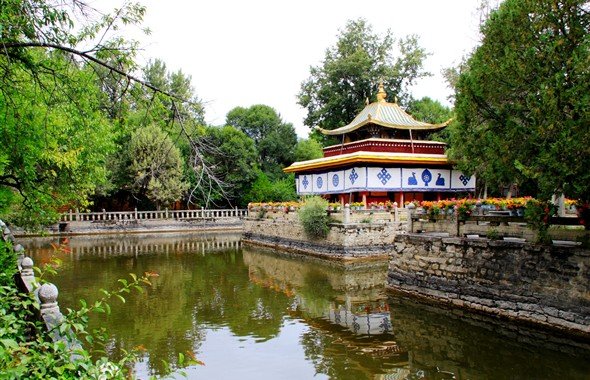
Norbu Lingka
Names
In Tibetan, Norbulingka means Treasure Garden.or Treasure Park". The word 'Lingka' is commonly used in Tibet to define all horticultural parks in Lhasa and other cities. When the Cultural Revolution began in 1966, Norbulingka was renamed People's Park and opened to the public.
Geography and environment
The palace, with 374 rooms, is located 3 kilometres (1.9 mi) west of the Potala Palace, which was the winter palace. It is in the western suburb of Lhasa City on the bank of the Kyichu River. When construction of the palace was started (during the 7th Dalai Lama's period) in the 1740s, the site was a barren land, overgrown with weeds and scrub and infested with wild animals.
The park situated at an elevation of 3,650 metres (11,980 ft) boasted of flower gardens of roses, petunias, hollyhocks, marigolds, chrysanthemums and rows of herbs in pots and rare plants. Fruit trees of apple, peach and apricot were also reported (but the fruits did not ripen in Lhasa) and also poplar trees and bamboo. In its heyday, the Norbulingka grounds also witnessed wild life in the form of peacocks and brahminy ducks in the lakes. The park was so large and well laid out that cycling around the area was even permitted to enjoy the beauty of the environment. The gardens are a favourite picnic spot and provides a beautiful venue for theatre, dancing and festivals, particularly the Shodun or 'Yoghurt Festival', at the beginning of August, with families camping in the grounds for days surrounded by colourful makeshift windbreaks of rugs and scarves and enjoying the height of summer weather.
There is also a zoo at Norbulingka, originally to keep the animals which were given to the Dalai Lamas. Heinrich Harrer helped the 14th Dalai Lama build a small movie theatre there in the 1950s.
History
Norbulingka Palace of the Dalai Lamas was built about 100 years after the Potala Palace was built on the Parkori peak, over a 36 hectares (89 acres) land area. It was built a little away to the west of the Potala for the exclusive use by the Dalai Lama for stay during the summer months. Tenzing Gyatso, the present 14th Dalai Lama in the order stayed here before he fled to India. The building of the palace and the park was undertaken by the 7th Dalai Lama from 1755. The Norbulingka Park and Summer Palace were completed in 1783 under Jampel Gyatso, the 8th Dalai Lama, on the outskirts of Lhasa. and became the summer residence during the reign of the Eighth Dalai Lama.
The initial history of Norbulingka is traced originally to a spring at this location, which was used during summer months by the 7th Dalai Lama to cure his health problems. Qing Dynasty permitted the Dalai Lama to build a palace at this location for his stay as a resting pavilion. Since subsequent Dalai Lamas also used to stay here for their studies (before enthronement) and as a summer resort, Norbulingka came to be known as the Summer Palace of the Dalai Lama.
The 8th Dalai Lama was responsible for many additions to the Norbulingka complex in the form of palaces and gardens. However, it is reported that 6th through to 12th Dalai Lamas died young and under mysterious circumstances, conjectured as poisoned. Also, most of the credit for the expansion of Norbulingka is given to the 13th and the 14th Dalai Lamas.
The summer residence of the Dalai Lama located in the Norbulingka park is now a tourist attraction. The palace has a large collection of Italian chandeliers, Ajanta frescoes, Tibetan carpets and many other artifacts. Murals of Buddha and the 5th Dalai Lama are seen in some rooms. The 14th Dalai Lamas (who fled from Tibet and took asylum in India) meditation room, bedroom, conference room and bathroom are part of the display explained to the tourists.
Layout
Built in the 18th century, the Norbulingka Palace and the garden within its precincts have undergone several additions over the years. The vast complex covers a garden area of 3.6 km2 including 3.4 km2 of lush green pasture land covered with forests. It is said to be the highest garden anywhere in the world and has earned the epithet Plateau Oxygen Bar.
The layout of the Norbulingka complex is a combination of the "world's highest, largest and best-preserved ancient artificial horticultural garden". Norbulingka blends gardening with architecture and sculpture arts of several Tibetan ethnic groups; 30,000 cultural relics of ancient Tibetan history are preserved here.:94 The complex is demarcated under five distinct sections. A cluster of buildings to the left of the entrance gate is the Kelsang Phodang (The full name of this palace is "bskal bzang bde skyid pho brang"), named after the 7th Dalai Lama, Kelsang Gyatso (1708-1757). It is a three-storied palace with chambers for the worship of Buddha, bedrooms, reading rooms and shelters at the centre. The Khamsum Zilnon, a two-storied pavilion, is opposite the entry gate. The 8th Dalai Lama, Jamphel Gyatso (1758-1804) substantially enlarged the palace by adding three temples and the perimeter walls on the south east sector and the park also came to life with plantation of fruit trees and evergreens brought from various parts of Tibet. The garden was well developed with a large retinue of gardeners. To the northwest of Kelsang Phodrong is the Tsokyil Phodrong which is a pavilion in the midst of a lake and the Chensil Phodrong. On the west side of Norbulingka is the Golden Phodron, built by a benefactor in 1922 and a cluster of buildings which were built during the 13th Dalai Lama's time. The 13th Dalai Lama, apart from the being responsible for architectural modifications, including the large red doors to the palace, improved the Chensel Lingkha garden to the northwest. To the north of Tsokyil Phodrong is the Takten Migyur Phodrong which was built in 1954 by 14th Dalai Lama and is the most elegant palace in the complex, a fusion of a temple and villa. The new summer palace which faces south was built with Central Government funds and completed in 1956.
The earliest building is the Kelsang Palace built by the Seventh Dalai Lama which is "a beautiful example of Yellow Hat architecture. Dalai Lamas watched, from the first floor of this palace, the folk operas held opposite to the Khamsum Zilnon during the Shoton festival. Its fully restored throne room is also of interest."The Norbulingka's most dramatic area was the Lake Palace built in the southwest area. In the centre of the lake, three islands were connected to the land by short bridges. A palace was built on each island. A horse stable and a row of four houses housed the gifts received by the Dalai Lamas from the Chinese emperors and other foreign dignitaries.
Construction of the 'New Palace' was begun in 1954 by the present Dalai Lama and completed in 1956. It is a double story structure with a Tibetan flat roof. It has an elaborate layout with a maze of rooms and halls. This modern complex contains chapels, gardens, fountains and pools. It is a modern Tibetan style building embellished with ornamentation and facilities. In the first floor of this building, there are 301 paintings (frescoes) on Tibetan History dated to the time when Dalai Lama and the Panchen Lama met Chairman Mao Zedong. As of 1986, the palace had an antique Russian radio and a Philips console still containing old 78 rpm records.
The entire Norbulingka complex was delimited by two sets of walls. The inner wall, painted yellow, was exclusive for the Dalai Lama and his attendants. Officials and the Dalai Lama's royal family lived in the area between the inner yellow wall and the outer wall. A dress code was followed for visitors to enter the palace; those wearing Tibetan dress were allowed; guards posted at the entry gates controlled the entry and ensured that no western hat wearing people (which was made popular in Tibet during Lhamdo Dhondups time) were allowed inside. Wearing shoes inside the park was banned. Guards at the gate offered a formal arms salute to the Nobles and high rank officials. Even the officials at the lower category also received a salute. The gates outside the yellow wall were heavily protected. Only the Dalai Lama and his guardians could pass through the gates. Tibetan mastiff dogs kept in niches of the compound walls tied with long yak hair leashes were the guard dogs that patrolled the perimeter of the Norbulingka.
On the east gate to the Norbulingka there are two mythical snow lion statues covered in katag (a thin white scarf as a mark of respect), at the entrance itself; the one on the left is seen with a lion cub. Snow lion is the symbol of Tibet and according to legend they jump from one snow peak to another. Most of the buildings are closed now; have become storehouses or used as offices for those who take care of the maintenance works. Some additional buildings seen now are souvenir kiosks catering to the visitors.
Restoration and preservation
During the Cultural Revolution, the Norbulingka complex suffered extensive damage. However, in 2001, the Central Committee of the Chinese Government in its 4th Tibet Session resolved to restore the complex to its original glory. Grant funds to the extent of 67.4 million Yuan (US$ 8.14 million) were sanctioned in 2002 by the Central Government for restoration work; restoration work beginning in 2003 mainly covered the Kelsang Phodron Palace, the Kashak Cabinet offices and many other structures.
Norbulingka
Norbulingka was declared a "National Important Cultural Relic Unit, in 1988 by the State council. On 14 December 2001, UNESCO inscribed it as a World Heritage Site as part of the "Historic Ensemble of the Potala Palace".The historic ensemble covers three monuments namely, the Potala Palace, winter palace of the Dalai Lama, the Jokhang Temple Monastery and the Norbulingka, the Dalai Lama's former summer palace built in the 18th century considered a masterpiece of Tibetan art. The citation states: "preservation of vestiges of the traditional Tibetan architecture". This is viewed in the context of extensive modern development that has taken place under Chinese suzerainty in Tibet. The Chinese State Tourism Administration has also categorized Norbulingka at a Grade 4 A at the National Tourism (spot) level, in 2001. It was also declared a public park in 1959.
Festivals
Dancing at Sho Dun Festival,also spelt Shoton Festival, (popularly known as the "yogurt festival") is an annual festival held at Norbulingka. The date for the festival is set according the Tibetan calendar, which is a Lunar based calendar. The festival is celebrated during the seventh month in the first seven days of the Full Moon period, which corresponds to dates in July/August according to the Gregorian calendar. The week-long festivities are marked by eating and drinking, with Ache Lhamo, the Tibetan opera performances as the highlight, held in the park and other venues in the city. On this occasion yak races are a special attraction held in the Lhasa stadium. During this festival, famed Opera troupes from different regions of Tibet perform at the Norbulingka grounds; the first opera troupe was founded in the 15th century by Tangtong Gyelpo, considered the Leonardo da Vinci of Tibet. Over the centuries other opera formats of the 'White Masked Sect' and the "innovative" 'Black Masked Sect' added to the repertoire, and all these forms and subsequent innovations are enacted at the Sho Dun festival. The Chinese observe the holidays of the Chinese calendar at the Norbulingka grounds with Tibetan music and dance under Government patronage. Tibetans also observe traditional holidays with Tibetan music and dance at this venue.
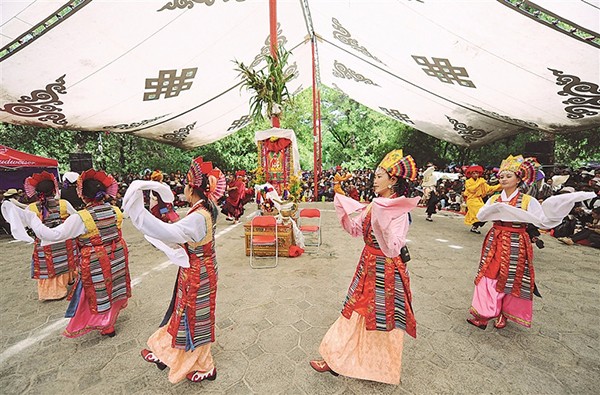
Norbu Lingka
During the reign of the Dalai Lamas (from the 7th Dalai Lama onwards), their annual shifting of residence from the Potala Palace to Norbulingka Palace was also an elaborate festive event. The Dalai Lama used to be escorted in a glittering procession to spend 6 months of the summer season in the Norbulingka Palace.
Travel Map
Recommend Tour
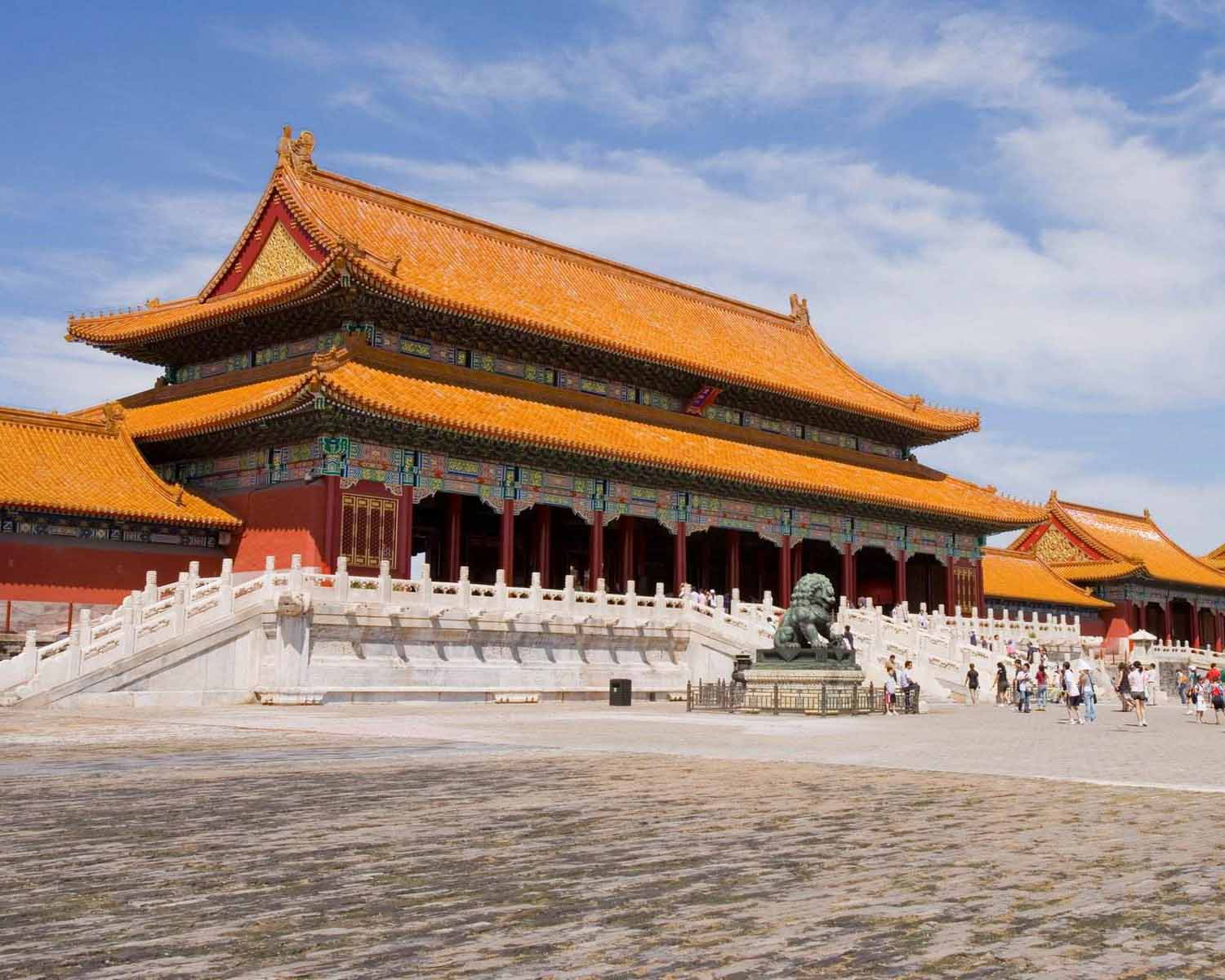
7 Days Beijing Tibet History Exploration Tour by Flight
7days
Make full use of your time to explore two top-rated cities in China, you’ll be amazed at the richness of Chinese culture and history by exploring two grand palaces(Forbidden City and Potala Palace) and Great Wall, even impressive Tibetan temples, this all-inclusive Beijing Tibet tour package will surprise you completely.

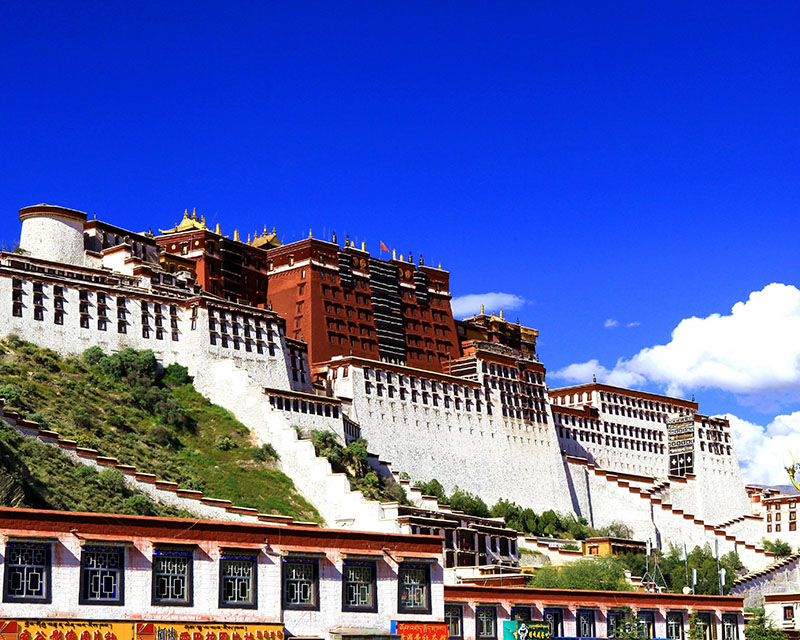
4 Days Tibet Classic Tour
4days
This 4 days Tibet highlight tour is suitable for travelers who want to experience the essence of Tibet in a short stay. For exploring Lhasa city, you will experience authentic Tibetan culture and appreciate amazing Tibetan monasteries, be immersed in the daily devoted pilgrimage culture of local people.

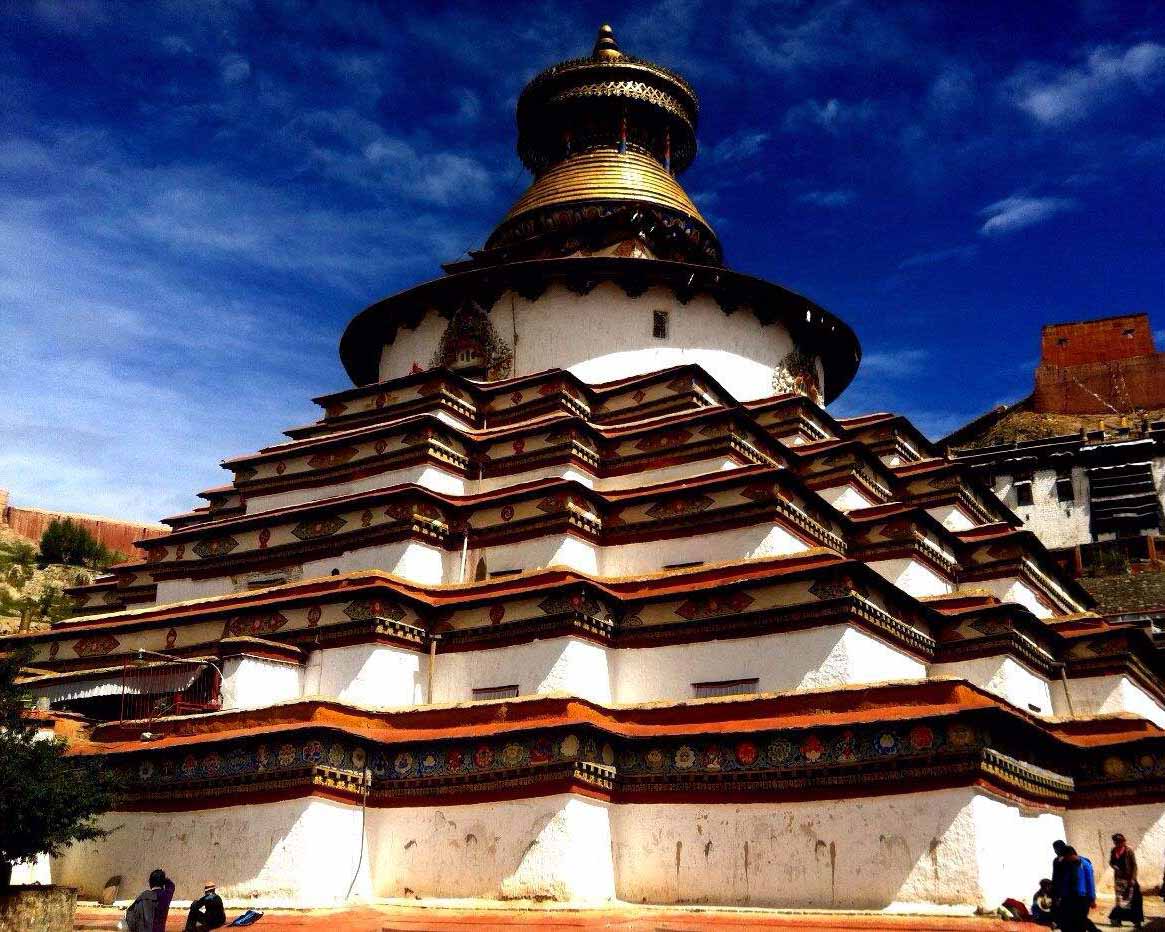
7 Days Lhasa Gyantse Shigatse Culture Tour
7days
This one week Tibet tour covers the most popular cities, travel from Lhasa, Gyantse to Shigatse, enjoy in-depth monasteries culture exploration along the way, appreciate grand Potala Palace and marvel at the stunning views of Yamdrok Lake of this pure land.

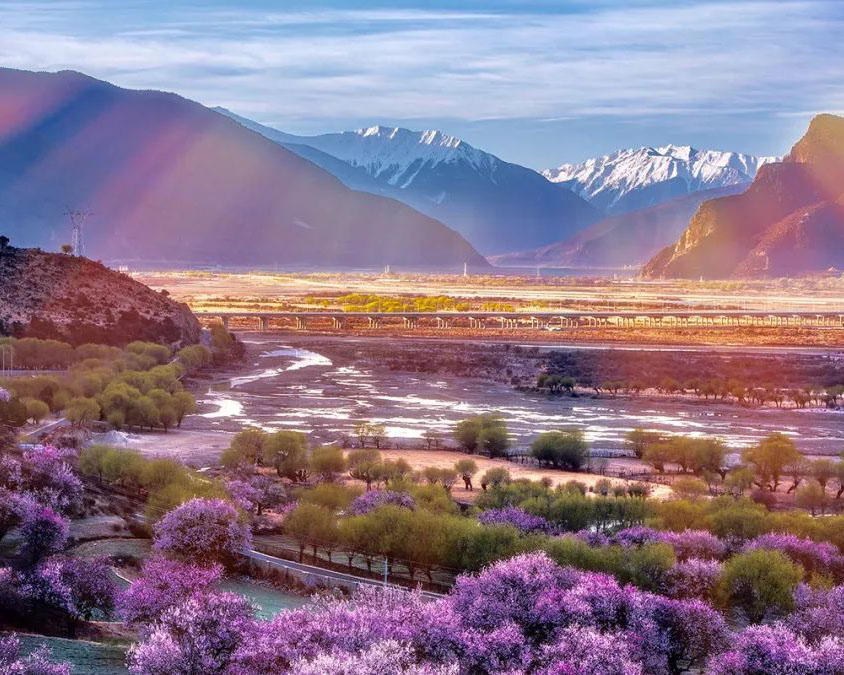
6 Days Lhasa Nyingchi Photography Tour
6days
This 6 days Lhasa Nyingchi photography tour leads you to discover Tibetan Buddhist culture and tradition in Lhasa and enjoy the most beautiful views at Nyingchi, such as Basum Lake, Lulang Forest, Yarlung Zangbu Grand Canyon. Breathtaking high plateau scenery with a great combination of pure snow mountains, carpet of flowers, green meadow etc.

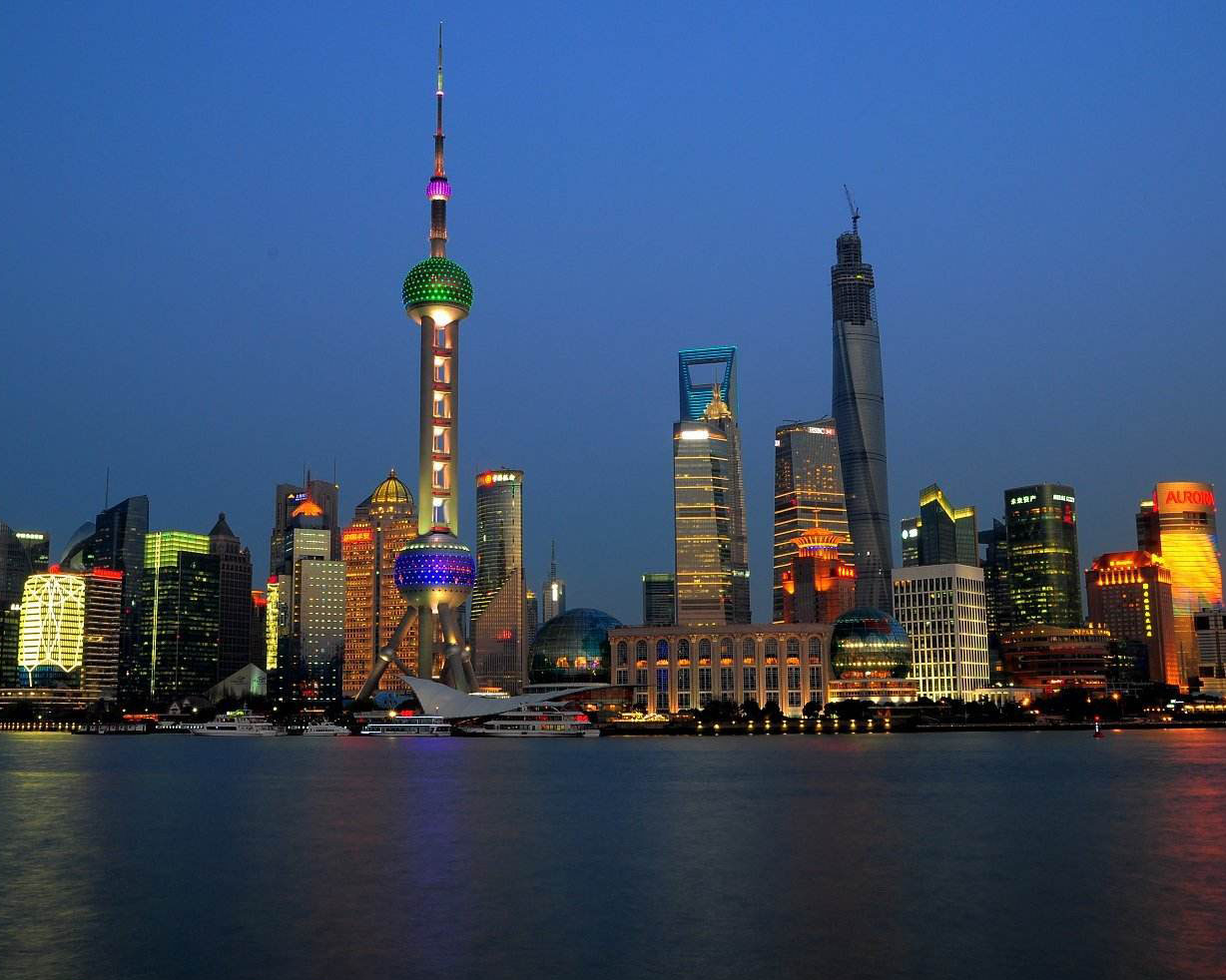
7 Days Shanghai Tibet Tour by Flight
7days
Travel from the east to west, a distinctive difference between Shanghai and Tibet will impress you a lot no matter from history, culture, economy, tradition etc. Experience the bustling and prosperous Shanghai and enjoy beautiful water town scenery, explore Tibetan Buddhist culture as you visiting UNESCO heritage site-Potala Palace and other historic temples.

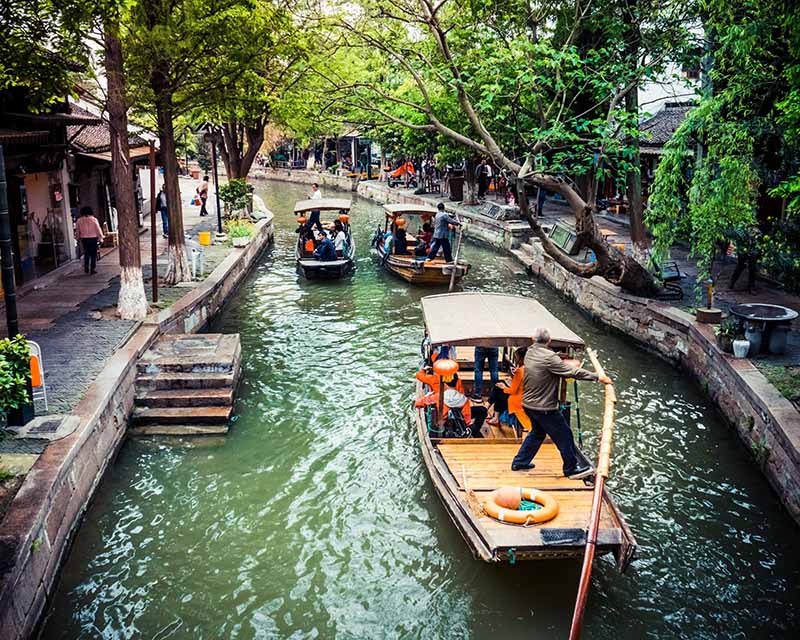
8 Days Shanghai Tibet Essence Tour by Train
8days
Enjoy this classic 8-day Shanghai Tibet tour package which covers all the popular attractions in both cities, be amazed at the prosperity of Shanghai and explore the Buddhist culture in Tibet, this Tibet tour from Shanghai by train will be a good choice for first-time visitors, reduce much high altitude sickness and enjoy unique scenery along the Qinghai-Tibet Railway, the marvelous highest railway in the world.

Answers to questions
 Marcopolo@chinatoursnet.com
Marcopolo@chinatoursnet.com


Phone:+86-13683536536
WhatsApp/iMessage:+86-13683536536
WeChat:chinatoursnet
Norbulingka Photos
.png)
.png)
.png)
.png)
.png)